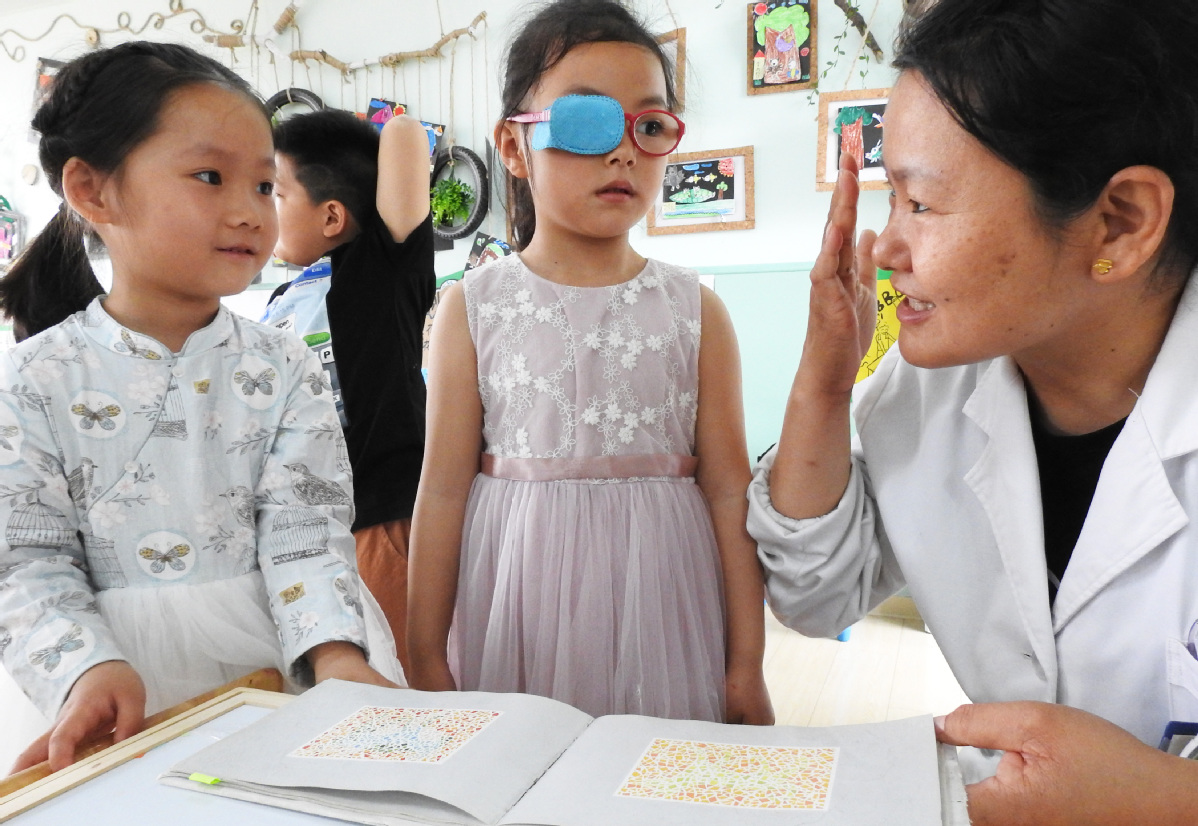Authorities eye ways to prevent childhood nearsightedness


Corrective measures
As the leader of a national task force on blindness prevention, Wang, from Beijing Tongren Hospital, participated in the compilation of The Guidebook on the Prevention and Control of Nearsightedness, published on June 6 last year, the 23rd China National Eye Care Day.
Wang and the task force recognized that one of the most effective ways to prevent and control myopia is for children to participate in outdoor activities for at least 90 minutes a day.
"Please note that the activities must be conducted outdoors; those indoors will be invalid," he said.
Additional measures, such as supervising students in "ocular gymnastics", may make a small difference, but more important, all parties - health and education authorities, families and society as a whole - should work together in a coordinated way to reduce the incidence of nearsightedness among children and young students, he added.
Wang Haifeng, the mother of a seventh-grade student in Beijing, fully understood Wang Ningli's remarks.
Her son, Ma Lele, was diagnosed as nearsighted two years ago. By urging him to massage his eyes and play sports such as basketball, she was pleased to find that the young man's nearsightedness didn't worsen over the short term.
However, that situation didn't last long. Ma's eyesight has deteriorated since he started junior middle school in September.
"Homework grew noticeably, often taking two or three hours to finish every night. Worse, he could hardly spare time for physical exercise," Wang Haifeng said, adding that right before the winter vacation ended last month, Ma's spectacles of-2 diopters were "upgraded" to-3.50 diopters.
"As a parent, I often find myself in a dilemma: I can't stop my child from doing homework, but I'm worried about his eyesight," she said.
Improvements
However, things may have started to change for the better.
In August, the Ministry of Education, together with seven other government departments including the National Health Commission, issued a guideline that set a target of capping the proportion of nearsighted children below 38 percent for primary school students, 60 percent for those at junior middle schools and 70 percent for high school students by 2030.
To realize that goal, the ministry has ordered schools to reduce students' academic workloads, provide more light in classrooms, urge children to perform eye exercises, and participate in more outdoor activities.
Provincial education departments have already introduced concrete measures.
As the new semester started last month, teachers in Zhejiang province were barred from assigning homework on electronic devices.
In Fujian province, teachers were told not to assign any homework to first-and second-grade primary school students to reduce their academic workload. Meanwhile, authorities in Yunnan province ordered schools to inspect and monitor students' eyesight at least twice every semester.
These moves were all aimed at paying more attention to students' eyesight and avoiding eyestrain.
Chen, the teacher in Shanghai, said her school has strengthened management to protect students' eyesight.
In the past, she and her colleagues urged students to perform ocular gymnastics twice a day, in the morning and the afternoon.
Now, they have gone a step further by confiscating students' mobile phones when they arrive at school in the morning and returning them when classes finish.
"It may sound a little strict, but we hope to help reduce the time students spend on electronic devices," she said.
- Smart agriculture provides solutions for BRI countries
- Foreign experts, journalists explore China's cultural heritage
- Jiangxi county pioneers innovative rural development approach
- China's 'medicine capital' company goes fully automated
- Beijing prosecutors helping errant minors to get back on track
- Copyright Society of China wins approval to be observer of world intellectual property body





































